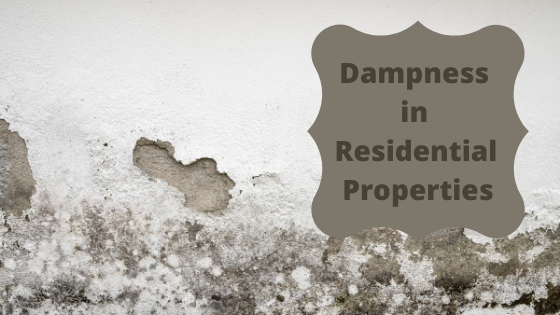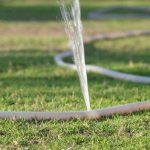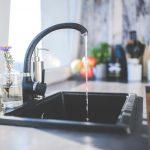Dampness in Residential Properties: How to Spot the Signs and What Can be Done
Mention the word ‘damp’ and you conjure up images and thoughts that are not pleasant, particularly when it relates to the family home. The grey mold, the stale smell, the condensated misty windows and rotten wood. For the residents of the house who have been exposed to long term damp problems, inhaling the mold particles which are present in the air, they can suffer with health problems, including coughing, wheezing, shortness of breath, chest infections and, more seriously, lung conditions such as asthma.
So, what is damp? According to the Oxford dictionary it is ‘moisture in the air’, probably better stated as unwanted moisture. As touched upon above, the signs of damp can be obvious, but not always. If you come across patches of black mold on walls, ceilings or floors, this is a clear indication that there is a damp problem and could well be as a result of leaking water somewhere in the property. Dark patches and cracks in plaster, rotting soft wood and crumbling or peeling paint are also common signs of damp being present. Soggy carpets and marked or spongy flooring, particularly underneath furniture or appliances, are other indications of a water issue. The not so obvious signs could be an increase in your water bills, which should be monitored month to month to identify any increases.
Depending upon where the damp and mold problems are located within the property, will give an idea of what the cause may be. In kitchens it could be due to a leaking appliance, such as a dishwasher or washing machine. In bathrooms there could be leaking taps or pipes that are connected to the sink and toilet. In other rooms of the house, such as living rooms and bedrooms, the presence of damp here could indicate a more serious problem of leaking water within the walls, ceiling cavities or under floorboards, or may be due to a lack of adequate water proofing within the property’s foundations. The problem here then becomes of how to identify where the water is leaking.
The impact of leaking water and damp problems can be upsetting and distressing, as well as negatively impacting your health. The financial cost of resolving water leaks and rectifying the resulting structural and decorative damage could be significant, particularly if substantial works and refurbishment are required.
Therefore, it is a sensible idea to monitor your home on a regular basis to identify water problems. Pull out appliances to check underneath on a periodical basis, as well as looking behind large items of furniture. Keep an eye out for damp patches on the ceilings, walls and floors or soggy carpets and cracked plaster. Water is such a precious natural commodity that it’s not just about the financial cost of leaking water and its effects, but the thousands of litres of water that are wasted every day. An example needs to be set for the future generations to appreciate this resource and learn how to make it last for as long as possible.
If you believe that you may have a damp problem in your home, may be as a result of leaking water, then LeakDtech can assist. Using infrared, thermal imaging and other technologies, a review of your property can be undertaken and any signs of water damage or leaks will be swiftly identified, even those underground, allowing not only for repair and a reduced financial burden, but also by helping to preserve that which we need to survive – water!




